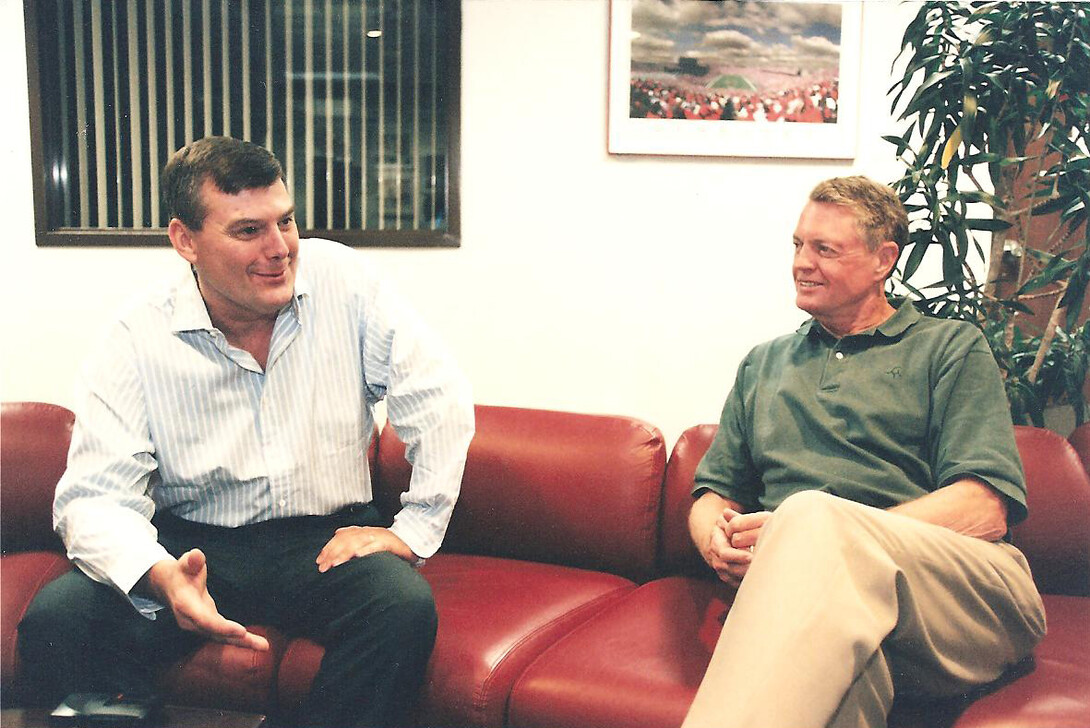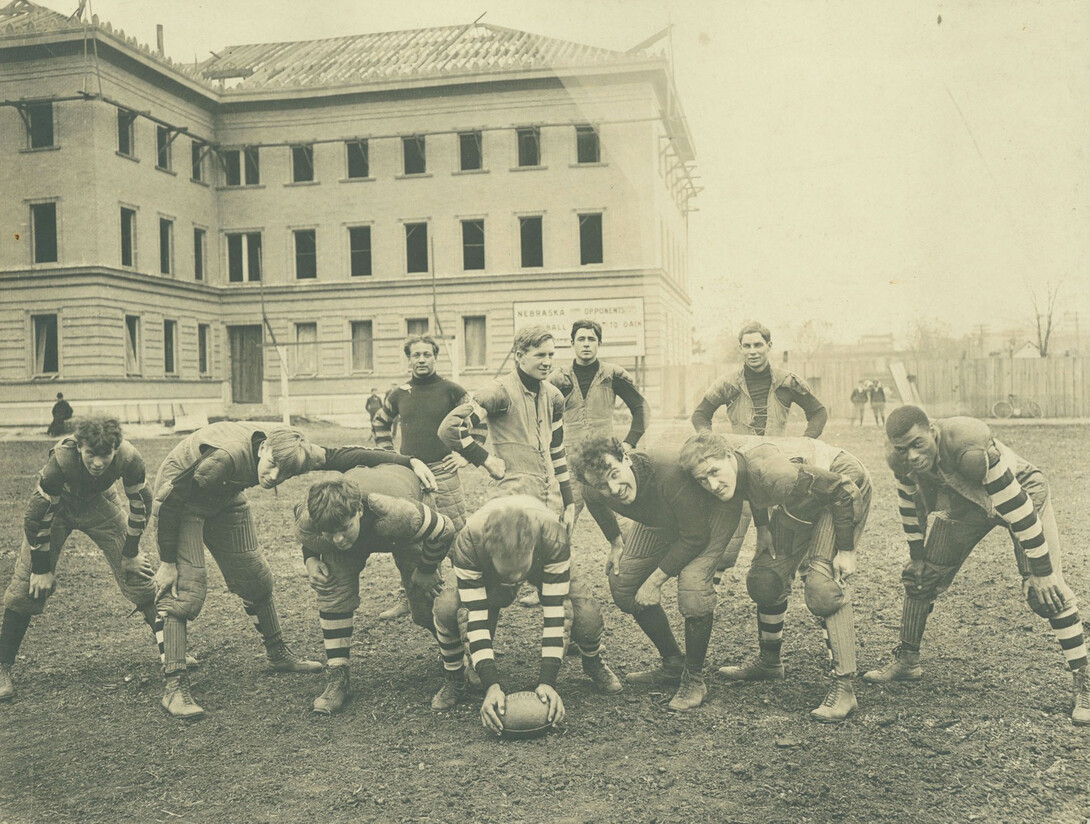
Much like the wave they perform on fall Saturdays in Memorial Stadium, Husker football fans have been through some ups and downs since the turn of the 21st century.
But the trials and triumphs of the Nebraska Cornhuskers, and the accompanying seesaw of fan pandemonium, are as old as the football team itself, sports journalist Mike Babcock said.
“Most people tend to think Nebraska football started finding success in the Devaney years,” Babcock, now the editor at Hail Varsity, said. “There’s a lot that happened before 1962 and the arrival of Bob Devaney. The tradition is rich beyond the success of five national championships. I’m going to try to pull out the most interesting things from a very long history.”
Babcock, the author or editor of a dozen books on University of Nebraska–Lincoln athletics, will look back over the last 129 years of Husker football during a special Nebraska Lecture at the Nebraska State Fair. The talk, which is free and open to the public, is slated for Aug. 24 at 1 p.m. in the Raising Nebraska Pavilion, inside the Nebraska Building at State Fair Park, 501 E. Fonner Park Road, Grand Island. The presentation is part of the University of Nebraska–Lincoln’s 150th anniversary celebration.

The talk will be a series of anecdotes, Babcock said, and he thinks he has a few surprises up his sleeve for even the most ardent fans. For example, Iowa was one of Nebraska’s earliest rivals — long before joining the Big Ten. The first football game played by the University of Nebraska against an out-of-state opponent took place in Omaha, against the University of Iowa, and police had to intervene — not in the game, but on the sidelines.
“They were having a difficult time keeping fans off the field because they were trying to intimidate the Iowa players,” Babcock, who has covered Husker athletics for 40 years, said. “That game attracted a good crowd: 2,500.”
Babcock will also share some folklore attached to that game about an olive branch Iowa extended to the coachless Nebraska, but here’s a spoiler: It’s not true.
“There’s a nice sportsmanship story there, but it didn’t happen,” he said. “All the way up until the 1990s, this was a popular story in articles, books and the media guides, but we did some research and found out it couldn’t have happened.”
Babcock shared a few more tidbits from his notebooks that will likely be included in the lecture:
• Fans and students turned on an 8-2 coach all the way back in 1905. Walter “Bummy” Booth, who coached from 1900 to 1905, won 24 games in a row, leading undefeated teams through the 1902 and 1903 seasons. Then he hit a skid, going 7-3 in 1904 and 8-2 in 1905. A student editorial at the time posited that Booth had probably taken the Cornhuskers as far as he could. Babcock noted that the team was 1-4 against Minnesota, and fans wanted Nebraska in the Western Conference (now the Big Ten). Success against Minnesota might have helped their case. Booth resigned.
• Ewald “Jumbo” Stiehm, who coached the Cornhuskers from 1911 to 1915, was so popular that local businesses offered to chip in money to raise his salary in order to keep him from leaving for another job. Faculty members and the administration balked at this, saying they could never allow coaches to be paid more than the professors teaching at the university.
• A student newspaper editorial in 1883 asked the administration to consider funding a university football team. The editorial chastised the school for not having a team, saying it was the only way to become a first-class university.
Babcock’s talk is the seventh in the 2019 Nebraska Lectures: Chancellor’s Distinguished Speaker series. Regularly offered twice a year and featuring faculty discussing research and creative activity, the series has expanded in 2019 to a year-long format celebrating the university’s 150th anniversary. The expanded series is supported through a $15,000 grant awarded by the National Endowment for the Humanities through Humanities Nebraska.
All talks in the N150-inspired Chancellor’s Lecture series are free and open to the public. The talks will be streamed online and made available via podcast.
The Nebraska Lecture series is sponsored by the Research Council, Office of the Chancellor, Office of Research and Economic Development, Osher Lifelong Learning Institute and Humanities Nebraska.







